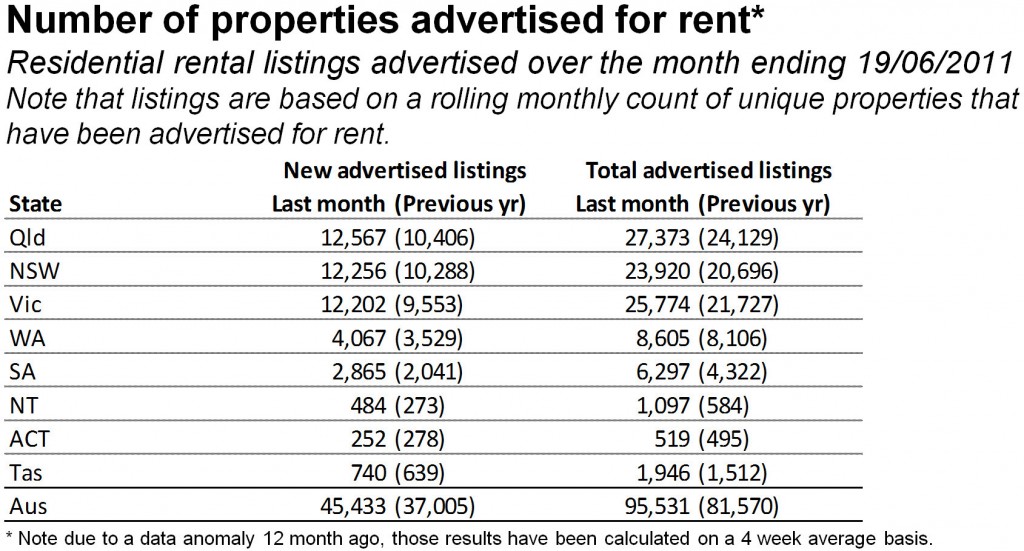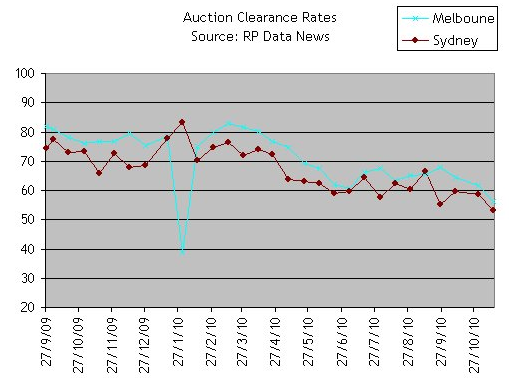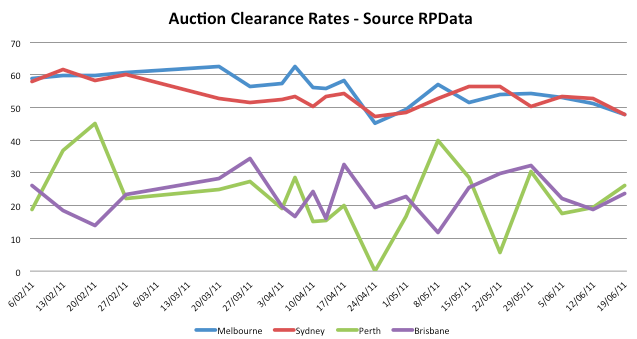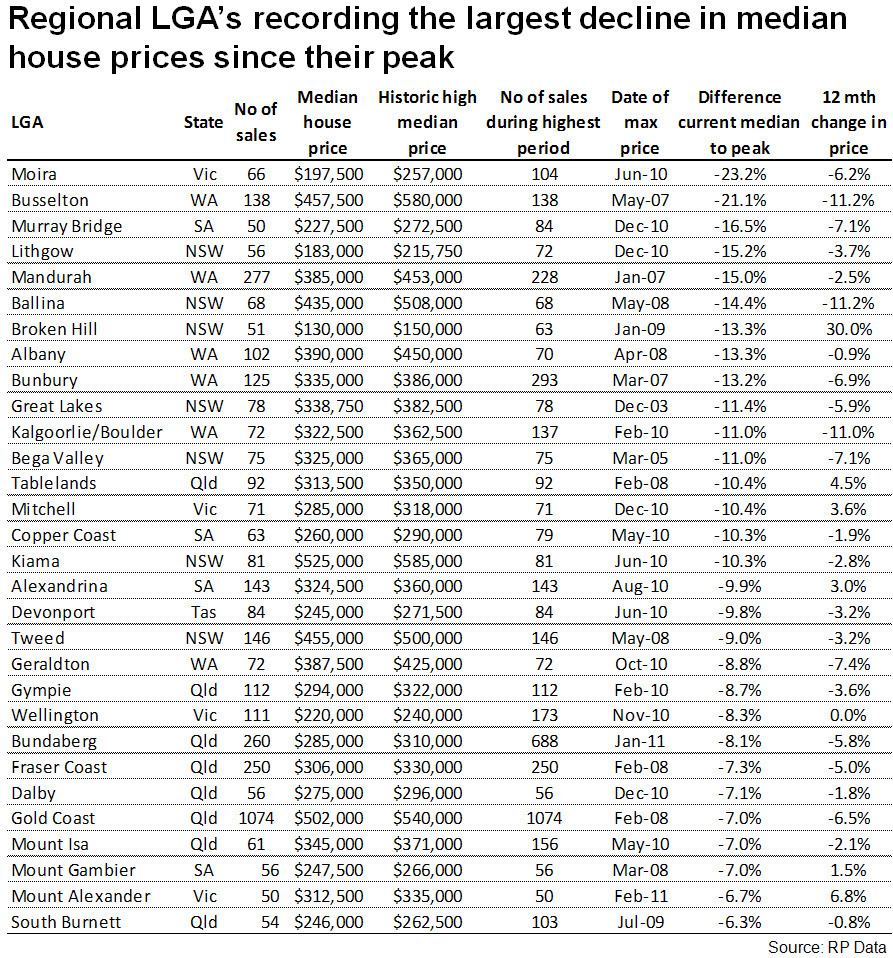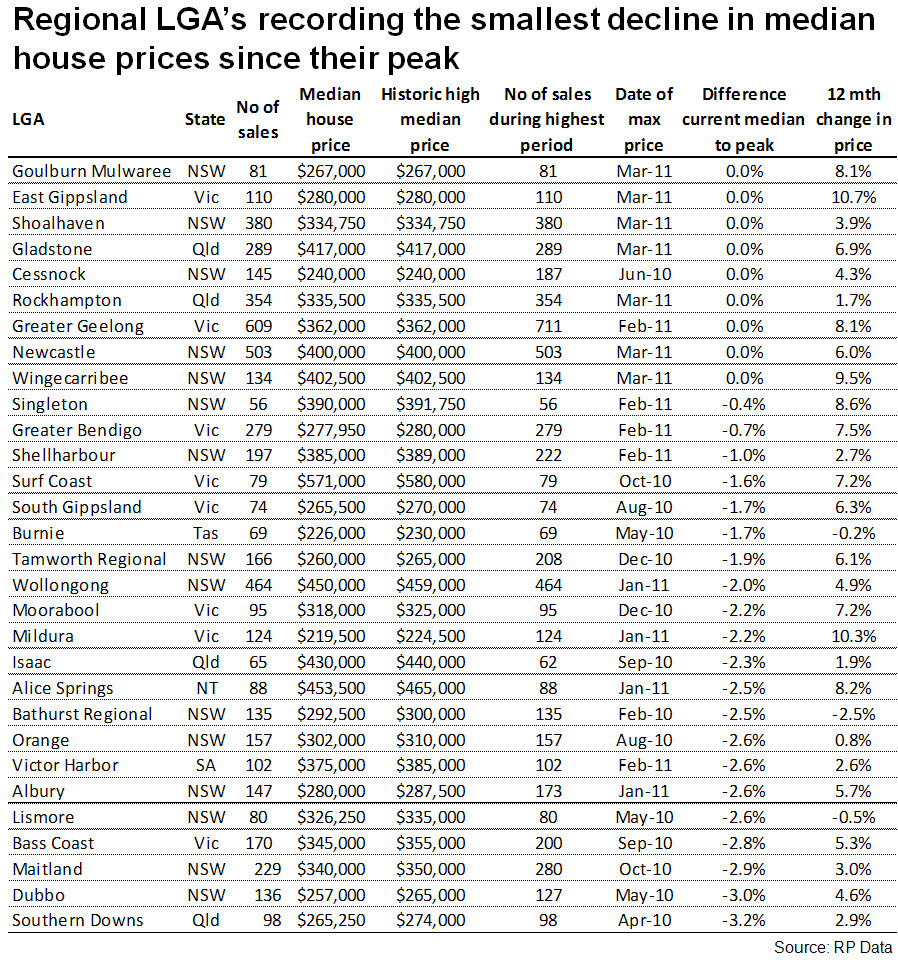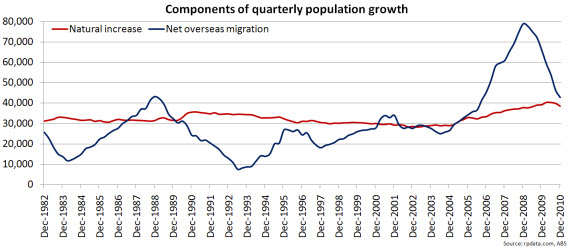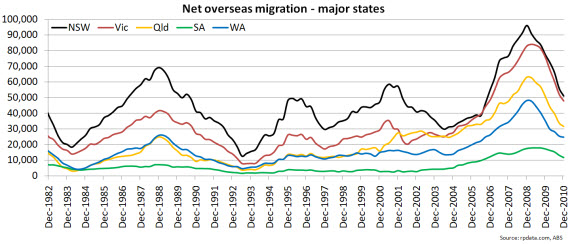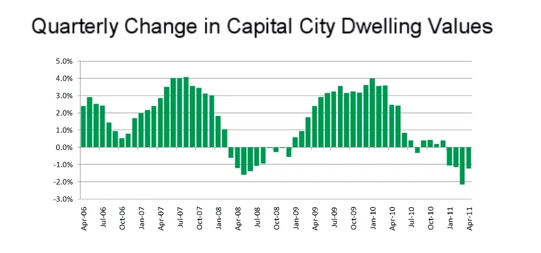RPData has put out their latest newsletter today and once again it isn’t great news for the housing market.
The RP Data-Rismark Home Value Index results for May 2011 will be released next week and there is little evidence to suggest that there will be any significant change to market conditions with values likely to be flat to slightly falling across the combined capitals. Listings remain elevated, transaction volumes are running around 14% below the five year average, clearance rates are relatively weak and the market is typically a lot quieter during the middle of the year.
The number of new properties advertised for sale has fallen by -10.1% nationally over the last four weeks however, new listings remain 28.0% higher than they were at the same time last year. Across the combined capital cities, new listings were down by just -3.9% and are 15.6% higher than they were at the same time last year. Despite the fall in new listings, total listings have remained relatively flat. Nationally total listings are down -0.4% and are 36.7% higher than 12 months ago and in the combined capital cities total listings are down -0.3% and are 33.9% higher than they were at the same time last year.
The rate of new listings is definitely slowing but this can be expected for this time of year. The number total listing is trending off which sounds positive for the market even if the stock on market is so high. I however suspect that what is actually happening is that vendors who can’t sell are moving their houses off the sales listings and onto the rent listings ( something that I have previously talked about ). The latest rental data supports this theory.
The number of new rental listings during the past four weeks has increased by 1.4% compared to the result for the previous week. New rental listings are 22.8% higher than they were at the same time last year. Compared to the 12 month average, current new listings are 15.5% higher. Total rental listings fell by -2.8% over the week and are 9.5% higher than the 12 month average
The weighted average capital city auction clearance rates improved slightly last week, up to 44.7% from 44.3% the previous week. Auction clearance rates are quite weak at the moment, sitting below 50% during seven of the last nine weeks. The number of properties being taken to auction is still significant with more than 1,500 capital city auctions last week. In both of the two largest auction markets, Melbourne and Sydney, clearance rates fell to 47.9% last week. During the previous week clearance rates were recorded at 51.3% in Melbourne and 52.9% in Sydney.
The auction clearance rate trend from RPData is something I have collated previously. You can see that both Sydney and Melbourne are in a downward trend and have been since 2009.
I took a look at this year’s data today and you can see that both Sydney and Melbourne are continuing on their downward path and are now reaching into the 40s which is nearly 50% less than 2 years ago.
In a follow-up to their previous information on best and worst performing capital city LGAs (based on change in median price), RPData have released the same for regional areas.
The big topic in the housing market at the moment is population growth and I noted today that The Age had a somewhat hysterical take on the latest data.
Net migration to Australia is in free fall. In two years, migration has plunged by almost half, intensifying the skills shortages that threaten to drive up interest rates.
The Bureau of Statistics reports that net migration was just 171,000 in 2010, down sharply from 316,000 in 2008, and the lowest since the bureau changed its measuring system in late 2006.
Australia’s population growth fell to 325,500 in 2010, down from 467,300 in 2008.
Cameron Krusher has a little more responsible take on the data at the RPData blog and includes some nice charts to put some historical perspective on those “free-falling” and “plunging” numbers.
Mr Kusher also points out that once again Queensland takes the wooden spoon.
While overseas migrants have always had a preference for New South Wales (Sydney) and Victoria (Melbourne), Australian’s have always had a clear preference for re-locating to Queensland. At its peak during the 12 months to September 1993, Queensland attracted almost 50,000 interstate migrants for the year. Interstate movements into Queensland have been slowing since 2003. Over the long-term, interstate migration into Queensland has averaged more than 27,000 persons annually, over the last 12 months just 7,243 persons migrated to Queensland from interstate, -73% below average. It is no wonder Queensland is attracting fewer interstate migrants, the net outflow of residents from New South Wales is at its lowest level since the late 1990’s and interstate migration into Victoria is at its highest levels since mid 2002. Add to this the lure of the mining dollar in Western Australia and the halting of the sea change migration trend and it is easy to see why interstate migration into Queensland is down so much.
The bad news for Queensland is also supported by a recent news item from RPData which has some pretty worrisome figures for those involved in the Queensland housing market. This item also provides some extra information that seemed to have been missing from their previous report, although I am not exactly sure what a “valuation adjustment” is in the context of housing.
Property Dexter found that in fact, when a valuation adjustment is made, Brisbane property values are down -9.7 per cent since the end of 2007, Gold Coast house values are down -19.9 per cent and Sunshine Coast values are down-13.2 per cent.
Some people are pointing to the January floods weighing down the south-east Queensland market. Yes the floods impacted the market however, the market was weakening before the floods and has continued to do so after the floods. The ongoing poor performance is being reflected by an increase in property listings, an increase in the time it takes to sell a property and greater discounts having to be offered by vendors in order to sell.
Vendor discounting is the difference between the price at which a property is initially listed for sale and the price it ultimately sells for. As at March 2011, Brisbane vendors were discounting the asking price on houses by an average of 7.7 per cent and units by 7.9 per cent. That means a house being advertised for $500,000 would, on average, sell for $461,500, a discount of $38,500. At the same time last year (when the market was still not particularly strong) discounts were recorded at 6.0 per cent for houses and 4.7 per cent for units.
With vendors having to become more flexible in their price expectations in order to sell their properties, it is also taking longer for properties on the market to sell. Throughout Brisbane it was taking an average of 66 days to sell a house in March 2011 and 63 days to sell a unit. At the same time in 2010 it was taking 50 days to sell a house and 41 days to sell a unit.
Although time on market and vendor discounting has increased dramatically, the number of properties advertised for sale across Brisbane is now starting to ease. Compared to the same time last year, the total number of properties available for sale at the moment is just 27.9 per cent higher. Despite the large disparity the introduction of new stock is slowing with new listings currently just 0.3 per cent higher than they were at the same time last year.
Property Dexter believes that there are three main reasons why the South East Queensland housing market is so weak: a slowdown in population growth into the region (particularly from interstate), the weak tourism market and a hangover from the strong capital gains in recent years.
Quite simply people from New South Wales and Victoria aren’t moving to the region in the same droves as they once were. Following the Global Financial Crisis (GFC), ‘sea changers’ are playing very little part in the current market and retirees are much more cautious about selling up their home and making the move to a coastal location. Also over recent years the gap between housing prices in Queensland markets compared to Sydney and Melbourne has closed significantly. With the recent under performance of the Queensland property market the gap is now widening again.
Although Brisbane isn’t exactly a tourism hotbed, the same can’t be said of the Gold and Sunshine Coasts. The high Australian dollar and the GFC have dampened tourism numbers and this is impacting South East Queensland and most coastal markets of the state.
I also noticed that in RPData’s latest video-blog ( available at the end of the post ) that Tim Lawless snuck in a version of a chart that I had mentioned had gone missing in their most recent press release, so I thought I would show it here.
Overall I agree with RPData as I don’t think much has changed. We are still seeing declines across the board and long running trends holding. I still can’t see much in the way of pick-up even in the depressed markets where you would expect to see lower prices pushing up demand. It may be happening in pockets, but I certainly can’t see it in the data. Listening to Tim Lawless in the following video probably won’t fill you with much confidence in the market either.

